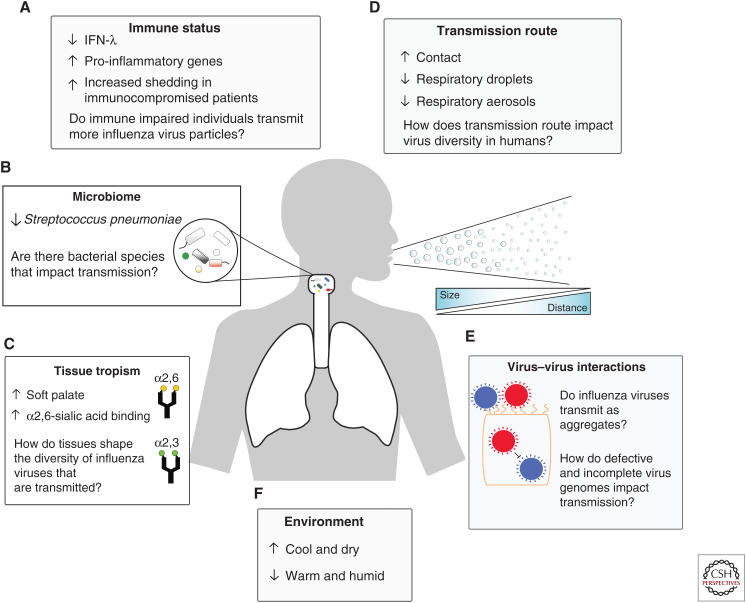Figure 1.
Host and virus determinants of influenza transmission. (A) Interferon (IFN)-λ limits the transmission of the influenza virus to recipient mice, whereas subsets of proinflammatory genes are correlated with an increase in virus transmission. Increased shedding of influenza was observed in immunocompromised and obese individuals. (B) Streptococcus pneumoniae limits the transmission of influenza A virus in mice. (C) In ferrets, transmissible influenza variants were enriched in the soft palate. Sialic acid receptors differ by host and tissue location and help limit the cross-species transmission of influenza A virus. (D) Contact transmission in ferret and guinea pig models yields a higher diversity of virus genotypes to recipient hosts; respiratory transmission (aerosol and droplet) reduces the diversity. Respiratory transmission of influenza is categorized by aerosol and droplet. Size of respiratory secretions impacts the distance traveled and the amount of time it remains suspended in the air. (E) Influenza infections contain a diverse collection of genetic variants. Coinfection with multiple variants such as a defective (red viral particle) and functional (blue particle) can lead to interference (shown), cooperation, and complementation. How these interactions act on the transmission of influenza virus is unknown. (F) Influenza viruses transmit better in cold and dry environments than warm and humid ones.

